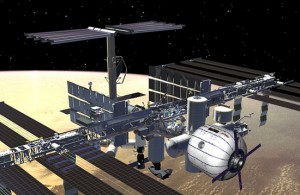January 10, 2014 – It was just over fifteen years ago when the ISS began assembly in low-Earth orbit and over the last 13 years it has represented our only permanent space habitat. At the time of its building ISS was rated to remain in orbit until 2016, just two years from now. But the space station is proving to be a pretty resilient piece of technology. As a result NASA has been given the go ahead by the U.S. government to keep the station going through 2024.
My guess is that this is the first of many extensions that will see ISS remain in orbit well into the 2030s. The reasons for my optimism are this:
- There is no better place to test new space technologies in space.
- There is no better place to test our human body’s ability to adapt to space while staying within close proximity to our planet.
- For every year ISS remains in orbit the return on the cost of assembly improves. Operating the station annually is far cheaper than the earlier phase when it was still being constructed.
- The station is a great place for us to learn how to build and assemble complex space structures.
- The station is a stimulus to the nascent commercial space industry which now features two private companies (SpaceX and Orbital Sciences) delivering supplies to ISS. Add to this the commercial habitat that Bigelow Aerospace intends to attach to the station next year (see image below) and you have all the makings of a new space race fuelled by private enterprise.
- The station is a natural assembly and departure point for human Deep Space exploration including missions to near-Earth asteroids, the Moon and Mars.











